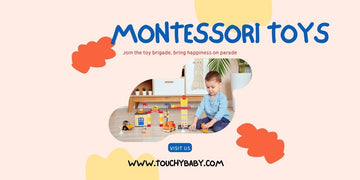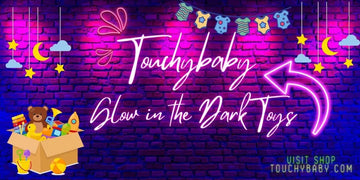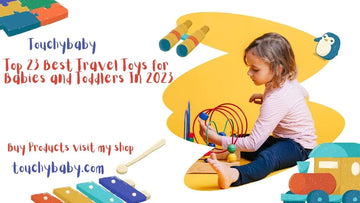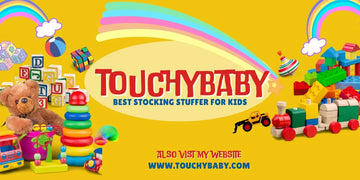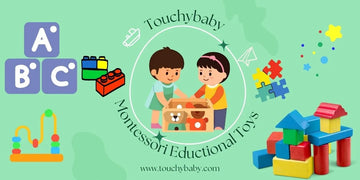
Best Montessori Educational Toys for 3 Year Olds 2023 has some fantastic gift suggestions, including stacking toys, jigsaw puzzles, colour-matching wooden puzzles, and sensory toys. There are many toys that fit the montessori lifestyle, there isn't really such a thing as a "montessori toy" per se. By removing needless distractions, toys that follow the Montessori method support your child's focus on mastering one skill at a time. Too many functions on one toy can inhibit deeper learning, just as having too many toys can be overwhelming. The best Montessori educational toys for 3-year-olds may be found when your child turns three, a very amazing period starts.
We have been stocking our home with tools that double as toys over the years, encouraging development of both gross and fine motor skills. If you are unclear about the meaning, it's easy to understand. They also like playthings that are open-ended and inventive. Best Montessori Educational Toys that provide your child with the need to learn a wide range of subjects. Over the past few years, we have published a ton of our favourite tools and toys for kids of all ages.
Best Montessori Educational Toys for 3 Year Olds 2023
- Melissa & Doug Doorbell House
- Magna-Tiles
- Wooden Stacking Rainbow
- Toniebox
- Play Scarves
- Hape Marble Run
- Duktig Play Kitchen
- Stacking Stones
- LightBox Table
- Pikler Triangle
1. Melissa & Doug Doorbell House
One of my favourites is the finest Melissa camp Doug doorbell house. The extremely great Melissa camp Doug doorbell house toys could appear a little busier at first sight than you would anticipate. Its door has a unique key, which is fastened to the home's roof. To access the dolls, the kid must match the key to the lock and unlock the door, which is a fantastic fine motor practice. When I gave this to my first child on her third birthday, I was astounded by the focus.
- Sturdy Wooden:
This sturdy wooden doorbell house welcomes you with fun.
- Distinct Locks:
Four distinct locks with matching keys, four electronic doorbell sounds, and four poseable figures a cute tiny wooden house with four locking doors serves as the toy.
- Distinctive Ring:
There are four keys to unlock the doors, and each has a doorbell with a distinctive ring.
Pros:
- This is such a cute little toy and very sturdy as well.
- My granddaughter plays with this box for hours she loves it.
Cons:
- Got a defective one - doors aren’t straight and wallpaper is peeling off.
- Unfortunately it was for my son’s birthday and the closing window was yesterday.
2. Magna-Tiles
Magna-tiles are a system of building toys. Users can create a variety of geometric structures using the parts, which are magnetic plastic tiles in various forms. Your toys are fantastic for 3-year-olds and beautifully Montessori-aligned. These are truly present in the classrooms of many Montessori elementary schools. Young children utilise these to construct structures through free-form and imaginative play. This fosters the development of spatial reasoning, problem-solving abilities, and fine motor skills necessary for the pencil grip.
- Magnet Strength:
The size and magnet strength of these premium magnetic tiles are ideal for small hands.
- Building Set:
Magna-Tiles that glow in the dark are included in this magnetic building set.
- Common Shapes:
The common shapes are included in this expansion Magna-Tiles set.
Pros:
- My kids love these and play with them all of the time they are great.
- They are safe, they are fun our four year old is entertained for hours he building possibilities are endless.
Cons:
- The magnets are so weak that the structures fall over so easily.
- If you look up online, the older version of these had stronger magnets definitely not worth the price.
3. Wooden Stacking Rainbow
Brightly coloured wooden arches can be found in rainbow stackers that help kids develop their fine motor skills, thinking and logical abilities, reasoning abilities, and imagination. It also helps kids learn about colours. When it comes to open-ended play, 3-year-olds are starting to "come into their own". On their toy shelf, a wooden stacking rainbow provides many options for loose part play. By experimenting with various stacking and balancing techniques, they can develop their creativity. It fosters spatial awareness and problem-solving abilities.
- Stacker:
Pine wood, which is sturdy, stackable, and ensures that the rainbow blocks won't break easily, is used to make the wooden rainbow stacker.
- Building Board:
A giant rainbow stacker, a rainbow semicircle, and a rainbow building board are all included in the wooden rainbow stacking toy set.
- Countless Play:
This durable and adaptable Large Rainbow Stacking Toy, there are countless play scenarios.
Pros:
- These are great my granddaughter loves them.
- This product quality is good.
Cons:
- The description for this item is inaccurate.
- It states the toy is "child safe" and for babies and toddlers.
4. Toniebox
Children's digital audio player called Toolbox the play-based cloud-based system mixes music and stories with a special play component in a user-friendly and robust kid-friendly device. The Toniebox was designed with the goal of becoming the ideal first audio system for children. Germany has long been a hotbed of Toolbox popularity, and now the rest of the globe is starting to catch on. Three-year-olds can have complete control over their audiobooks and music with a Toolbox. The one seen below is ours, and all of my kids really like playing with now a well-liked option for parents worldwide.
- Listener Power:
The Toniebox gives your young listener power over story time.
- Volume Squeeze:
To increase or decrease the volume, squeeze one ear.
- Fast Forward:
To switch chapters, tap the sides to fast-forward or rewind, rotate the device. Trading stories is easy.
Pros:
- Several cute stories, kids have listened to it over and over.
- Peppa Pig is one of my son’s favourite shows he loves this Tonie, soon we'll be adding Peppa too.
Cons:
- This product is low quality.
5. Play Scarves
Play scarves have a variety of uses. Silk scarves are ideal because they may be used for dress-up and other imaginative play activities. Many 3-year-olds are starting to show an interest in tying objects together, which may be a play strategy. Play silks and play scarves are two terms for the same item that are frequently used in Waldorf playrooms and schools. They enable kids to use their imaginations. Make capes, outfits, blankets for dolls, costumes, and accessories out of them. Play scarves are a multipurpose and unrestricted toy that promotes imagination and pretend play.
- Experiment:
encouraging creativity as we experiment with many ways to play with our scarves.
- Directional Tracking:
As we visually follow the motion of our scarves, we are able to teach directional tracking.
- Peekaboo:
As we play catch or peekaboo, our eye-hand coordination will get better, talk about what we are doing with our scarves, and our vocabulary grows.
Pros:
- Bought this for my infant (up to a year) classroom and they love it.
- Great sensory toy.
Cons:
- This product is low quality and low material.
6. Hape Marble Run
Hape marble runs are a lot of fun for kids, and Hape Marble Run let's youngsters as young as 3 take part in the creation. Similar to a slide, a marble run is a similar construction, except instead of kids sliding down it, a marble slides down it. A good way to investigate the ideas of relative position and mobility is to build a marble run. It is a fantastic approach to engage children of all ages in an engaging engineering task. For students, creating a marble run can be an enjoyable and interesting project.
- Central Hole:
Features of a marble run funnel will be guided into the centre of the funnel, where it will fall through a central hole.
- Marble Down:
The location where the stone will be taken when the run is complete a bend will slow the marble down and present a difficult challenge to your marble run.
Pros:
- My students love this marble run it's very cool.
- Is one of the best toys l ever bought .
Cons:
- The product was lost for 3 days and box was retapped and half the parts are missing
7. Duktig Play Kitchen
Your youngster can bake and prepare like the celebrity chefs on television thanks to Dustin, who plays in the kitchen. The battery-operated hob, which lights up when the fake cooking zones are on, has a tap, a sink, and other features. Plenty of room is provided for storing colourful veggies, as well as a rail with hooks for useful kitchen tools. Probably the most common play kitchen in Montessori households is the Ikea Dustin kitchen. It can be altered for practicality or left alone for imaginative play. Many Montessori parents provide their 3-year-old access to dishes and silverware through the cupboards, while leaving the stoves and sink as-is for imaginative play. The kid can use this to practise their inventiveness while acquiring useful life skills, creativity, and imagination.
- Colourful Veggies:
Plenty of room is provided for storing colourful veggies, as well as a rail with hooks for useful kitchen tools.
- Become Warm:
Hob lights that can be turned on or off and emit a realistic glow are a little bakers and cooks' dream come true because they do not become warm.
Pros:
- We got this for our then 20 month old and have been able to use it everyday with great quality.
Cons:
- I had to disassemble the entire thing and return it as they didn't have the sink somehow.
8. Stacking Stones
Children as young as three can improve their spatial reasoning and problem-solving abilities by stacking wooden stones. Children will have a great time playing with this colourful set of stacking stones. Rocks are piled in balanced stacking, frequently precariously, as a form of recreation or artistic expression known as rock balancing (also known as stone balancing or stacking).
- Trail Markers:
They can be used as trail markers, forms of creative expression, or for meditation practice, among other things.
- Constructing Rock:
The issue is that more and more individuals are constructing rock cairns as a way to leave their imprint, a sign of their presence in a natural area, or to publish on social media.
Pros:
- This product is good quality and has good material.
Cons:
- This product is low quality.
9. LightBox Table
Lightboxes tables can be put to a variety of inventive uses. Magna-Tiles and transparent Lego kits go well together in this purchase. Any 3-year-old would adore this fantastic purchase. A light source is located underneath a transparent, flat surface of a light table. Items placed on the surface are illuminated by the light, which is frequently fluorescent and radiates up through the surface. Applications like drawing, drafting, designing, or inspecting are perfect for these tables.
- Darkens:
A lightbox darkens the rest of your website while displaying your photographs in a front layer.
- Displaying:
It is a well-liked method for displaying a larger image without sending users to another webpage.
- Problem Solving:
The ideal way to foster language development, pattern and colour awareness, and problem-solving abilities is through lightboxes.
Pros:
- Added some photos taken with my 6dMkII and developed in Adobe Raw.
- Easy to set up and use usually have to play around to find best lighting and reflection situation.
Cons:
- The lights are uneven causing shadows and a halo around the items in the pictures.
10. Pikler Triangle
The Pikler Triangle, sometimes referred to as a climbing frame or climbing triangle, is a well-liked climbing triangle with Montessori-inspired features made to support the growth of children's strength and gross motor abilities. It's a creative method to help your youngster improve their balance, coordination, and large-motor abilities. In Montessori households, climbing triangles like this Piccolo Pikler Triangle are very common gross motor tools. Three year-olds can climb, but they can also use the climber in a variety of pretend play scenarios.
- Sometimes Referred:
The Pikler Triangle, sometimes referred to as a climbing frame or climbing triangle, is a well-liked climbing triangle.
- Motor Abilities:
Montessori-inspired features made to support the growth of children's strength and gross motor abilities.
- Youngster:
It's a creative method to help your youngster improve their balance, coordination, and large-motor abilities.
Pros:
- When I found my 1.5 year old standing on top of our dining room table.I knew I needed a safe, dedicated climbing toy.
Cons:
- The description says it takes about 20 minutes to assemble.
- It took at least double the time, with power tools.
Common Things:
- Montessori toys help children develop critical abilities like fine motor skills, focus, and problem-solving abilities by allowing them.
- To touch, manipulate, and investigate their environment.
- The toys by Montessori are made to promote children's independence, exploration, and discovery.
- They often use natural, high-quality materials and serve a specific purpose to support children's independent learning and skill development.
- The majority of the time, educational toys will improve a child's learning through fostering.
- Their reasoning and problem-solving abilities, communication skills, motor skills, and creativity.
Summary:
In this blog, Best Montessori Educational Toys has some fantastic gift suggestions, including stacking toys, jigsaw puzzles, colour-matching wooden puzzles, and sensory toys. I hope that the products mentioned above meet all of your needs. This is perfect according to needs so I highly recommend you choose this top best product in touchybay shops. We provide the top montessori educational toys for 3 Year Olds and all kinds of product related Information. I hope that Reading this block will give you a lot of guidance. Each product is explained with the most important features and also mentioned pros and cons. I have tried my best to guide you through this blog. Thank you very much for reading my blog.
People Also Ask? (FAQ’s)
What are the rules for Montessori Educational toys?
Real graphics ought to be used in the books about Montessori educational toys. As opposed to playing with pretend food, kids should be permitted to explore real fruits and vegetables. Figures of animals and vehicles should resemble actual examples. Plastic toys can be introduced in a wonderful way by using realistic figurines.
What is special about Montessori educational toys?
The goal of Montessori educational toys is to help kids concentrate on mastering one particular skill at a time. For instance, fitting the proper shape into the appropriate hole or building bricks without them collapsing over. This is thought to promote deeper learning and growth. Children can develop their problem-solving talents and self-confidence by using this targeted method.
How many toys to display Montessori Educational Toys?
So that the child may choose a toy to concentrate on, group about 9 to 12 various items on a low shelf. Other toys should be hidden away in a closet or another area.

